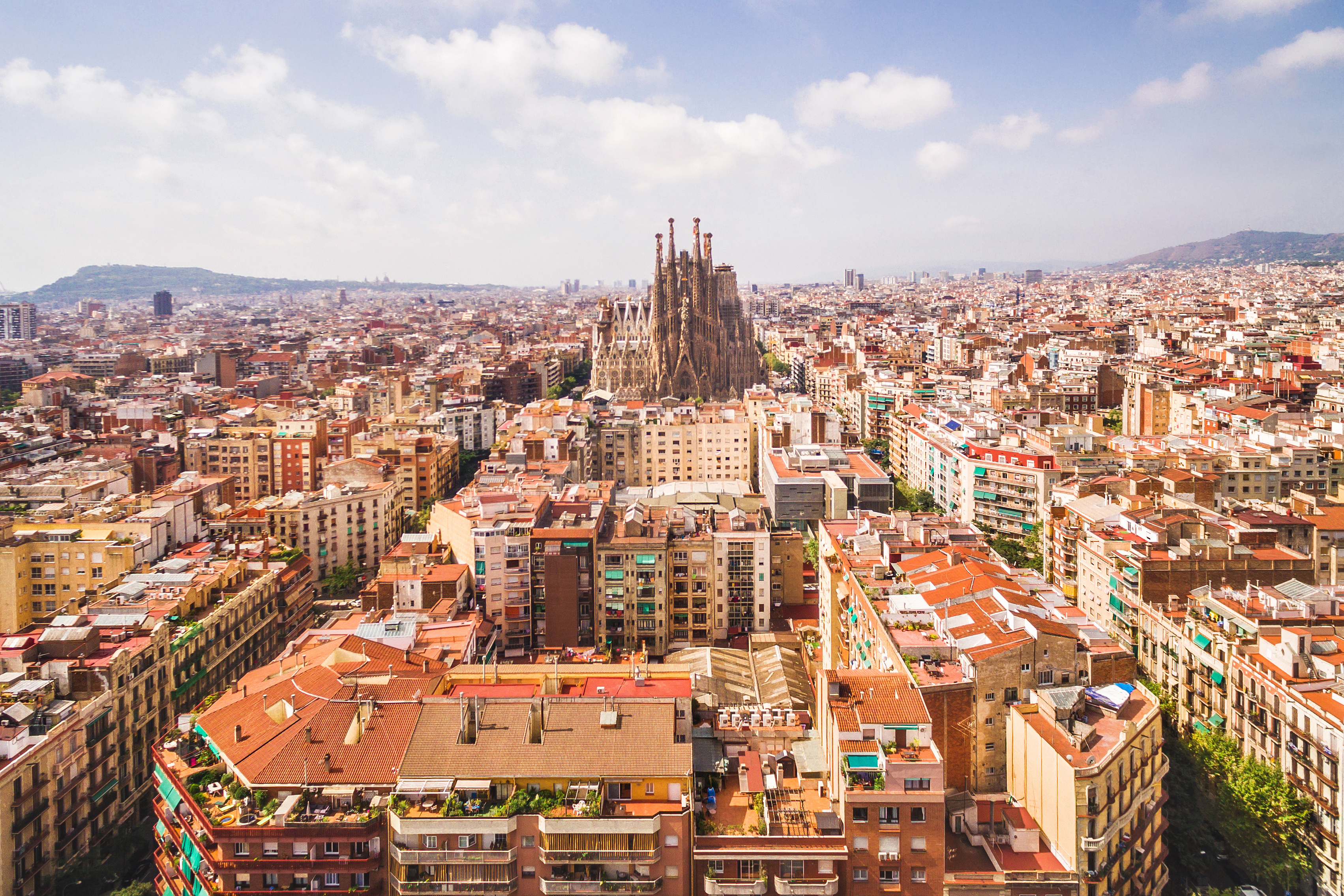
“Wine” Down in Barcelona!
Are you a self-proclaimed wine sommelier? Do you consider yourself a total wine snob or a â??winoâ??? Do you even just appreciate a nice dry red or sweet white from time to time? If so, exploring the wine culture in the Spanish region of Catalonia is a must on your list of travel plans! Catalonia, an independent region in the Northeast of Spain, has some of the oldest winemaking culture in all of Europe. And its capital city, Barcelona, totes some of the best wine you can find anywhere in the world!
Cataloniaâ??s winemaking traditions make up a large part of the regionâ??s rich history. Archaeological findings suggest winemaking was introduced to Spain by the Phoenicians through trades around 400 B.C. Ancient Catalan wines were traded with the Egyptians and Romans in the Spanish regions, upon which time Romanâ??s expanded the growing of grapes. The wine industry grew in the Northeast region of Spain under Roman rule, but after the fall of the empire, vineyards were neglected and henceforth ruined. Moorish leaders turned the vineyards over for different uses and Catalan wine production halted for many centuries. It wasnâ??t until Christians overtook the region that winemaking began to flourish again. Christian monasteries and convents pushed production of wine in the Catalan region and reignited the demand. By the 18th century, wine was one of Cataloniaâ??s biggest exports.
Heavy French influence has inspired Catalan wines throughout the years to become very versatile. In the late 18th century in the Penedes region, winemakers were intrigued by French Champagne. Shortly following experimentation, sparkling wine was invented and quickly gained popularity worldwide. The invention of sparkling wine turned the demand on its axis, and where Catalan vineyards were once comprised of over 80% red grapes, they are now made up of about 70% white grapes.
The Penedes region is only one of the nine â??Denominacions de Origenâ?, or Catalan wine regions. Alella is very close to Barcelona and is known for producing mainly white winesâ??particularly Chardonnay and Chenin Blanc. The Conca de Barbera region is elevated a little higher above the rest, with soil rich in limestone. This region grows grapes for Cabernet Sauvignon and Pinot Noir. Costers del Segre sits along the Segre River. Irrigation from Segre and the neighboring Ebre make for fruitful viticulture, and they produce everything from Cabernet to Chardonnay and Macabeo here. Near the Pyrenees is Empordaâ??a region producing Grenache and Carignan grapes. Merlot, Syrah, and even dessert wines come from these flavorful grapes. Monstsant is the youngest DO in Catalonia and was established in order to grow Garnacha and Carinena vines. Pla de Bages is also very close to Barcelona, and is famous for some of the most prestigious Cabernet Sauvignon and Merlot grapes. Tarragona is perhaps the oldest D.O. in the regionâ??with vital wine culture dating back to the Roman era. This region was most known for its sweet red grapes used to make Port, but has become a leader in providing red sacramental wine for the Christian Church for Communion. Terra Alta is the southernmost D.O. and although it is known for Garnacha Blanca, it is quickly being recognized for its growing red production.
Barcelona being the capital city of Catalonia, and the second biggest city in Spain, makes it the center of the regionâ??s wine market. Barcelona also has one of the biggest ports on the Mediterranean Sea, which has helped perpetuate the export of Catalan wine around the world. While visiting Barcelona, there are so many great ways to experience the amazing viticulture on a single day trip, or even just around town!
Most vineyards on the outskirts of Barcelona offer amazing tours and tastings by knowledgeable staff. Three great wineries nearest the city listed below are not only easy to get to, but are the perfect addition to any Barcelona travel:
Marfil Alella: Less than 10 miles outside the city, this is the oldest urban winery in all of Spain. It appeals to winos and architecture buffs alikeâ??as the wine cellars and factories are built in 20th century modernist style. Day tours include a visit to the Marfil Museum, vineyards, pressing and bottling factory, and of course tastings.
Pares Balta: About an hour train ride outside Barcelona, Pares Balta is known for its organic viticulture dating back to the 1700s. Since this is a family owned and operated vineyards, visits to the grounds are only available upon request. However, it is worth booking in advanced simply to see a traditional winery at its finest.
Bodegas Torres: One of the most important winemakers in the world, Bodegas Torres offers tours of their multiple vineyards throughout Catalonia; from their visitorsâ?? center Pacs del Penedes to their winery in the Priorat El Lloar. This is a unique experience in that you can see a very high volume wine distributor working at full speed.
If you donâ??t plan to spend an entire day devoted to wine, there are other ways to get your Catalan wine fix while staying in the regionâ??s Capital. Mon Vinic is one of the best wines bars not only in Spain, but in the world. From a state-of-the-art electronic wine list, to some of the top sommeliers, this is the number one spot for the best Catalan wine in the city. Vila Viniteca is a great Catalan wine retailer (so you can take some home with you!). Very knowledgeable staff can help you with your selections and right next door is the companyâ??s gourmet shop, where you can taste any and all of the wines offered in the shop. Lâ??Anima del Vi is a small, family-owned wine bar and retailer that only carries natural and organic wines. Itâ??s a great place to get educated on the different technology used to fortify wines and taste some of Catalanâ??s finest.
Whether your trip is focused around Catalan viticulture, or you just want to enjoy the â??fruitsâ? of the land, Barcelona has something for everyone in the way of vino! Take the time out in Barcelona to kick back, relax, and sip on some of the best wine in the world!
